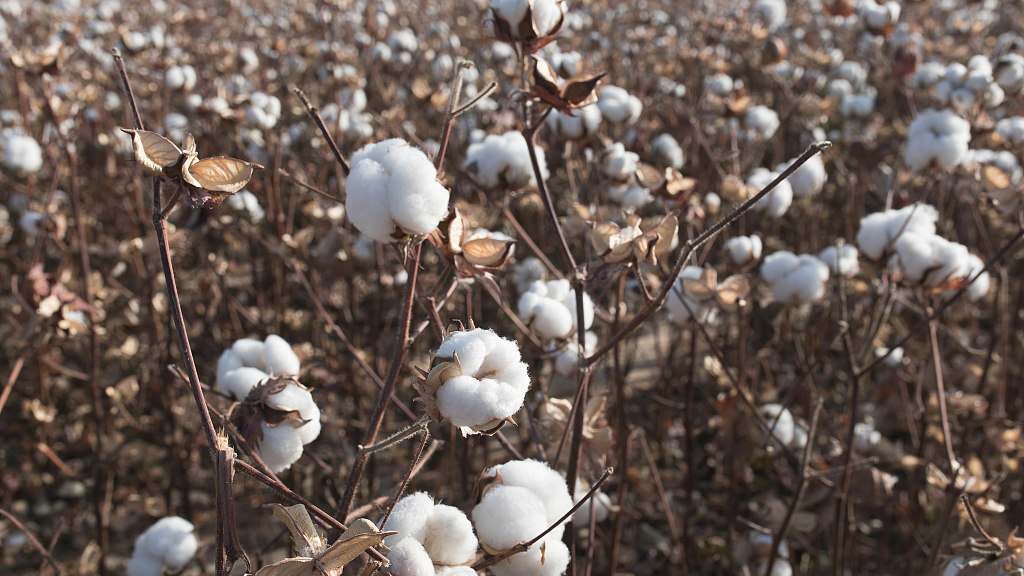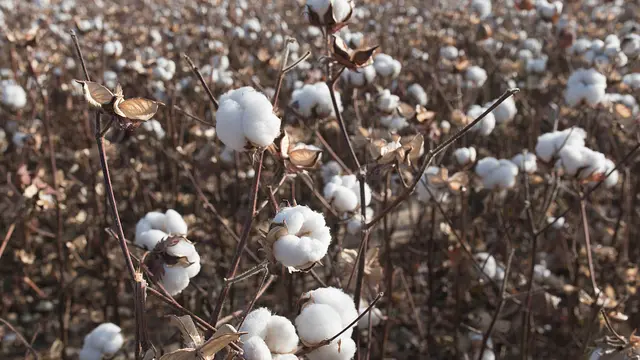02:51

China's Southwest University of Political Science and Law (SWUPL) released its findings on Tuesday after an extensive, prolonged investigation into Xinjiang's cotton industry, in the wake of the Western allegation of "forced labor" in one of the biggest industries across the far western land of China.
In March 2021, researchers from the Human Rights Institute and Non-traditional Security Institute of SWUPL set off to Aksu, Kashgar and other prefectures in northwest China's Xinjiang Uygur Autonomous Region to carry out field research. They interviewed some 70 cotton farmers and textile factory workers to find out more about their life.
Below are some highlights of the report.
What's behind the high level of mechanization of cotton production?
The research group found that cotton farmers in southern Xinjiang have been purchasing new machinery and equipment to assist the production process, including precision sowing, water and fertilizer integration, soil testing and formulated fertilization, and efficient cotton harvest. In 2020, the number of cotton-picking machines reached 834 in Aksu area, covering 71.3 percent of the cotton planting area in the whole region. Many cotton farmers said that their cotton production has been fully mechanized. The increasing mechanization rate in recent years has significantly lowered the labor cost.
"Last year, the price of machine picking was 120-130 yuan ($18.7-20.3) per mu (0.067 hectares). When using manual labor, if the output of one mu is estimated 500 kilograms, it will cost 1,000 yuan on picking payment," Ning Zuofu, a local cotton farmer, told the researchers. "When using machines, one mu of land will save 700 to 800 yuan. The benefit of using machines is obvious."
The payment for cotton-picking in Xinjiang is calculated based on the amount of the cotton picked, according to the report. Many respondents said that the high labor costs have affected the profits from cotton growing and production. Compared with manual picking, mechanized picking can reduce cost and increase income for cotton farmers by 500-600 yuan per mu.
Yumiti, another local cotton farmer, said that before mechanization, 700-800 cotton pickers were needed every year, but now only 60-70 people are needed to take charge of the daily management of cotton fields.
In the prefecture of Aksu, cotton cooperatives have been widely established. Under this model, farmers with less land can use the land contracted management right to exchange shares in the cooperative to obtain dividends, and participate in the production of cooperatives to obtain labor income. Farmers can also directly transfer the land to the cooperative, and go out to work for themselves.
Another phenomenon is that many commercial service providers are emerging in the market in southern Xinjiang. Those enterprises provide various kinds of cotton production services for cotton farmers, such as plowing, sowing, cultivation, plantation and harvesting. The commercial service has been widely accepted by cotton farmers as it improves the level of planting specialization and the quality of cotton, as well as reduces the cost of cotton production.
The implementation of governmental funding for agricultural machines also contributes to the high rate of mechanization. In recent years, the government of Xinjiang Uygur Autonomous Region has invested more in cotton-picking machinery. Data show the government released 1.034 billion yuan in the first four months of 2021 as agricultural machinery subsidies.
What's the income of cotton pickers?
Normally, full-time cross-regional cotton pickers can pick 100 to 160 kilograms of cotton each day, and some can go up to 200 kilograms. In the 70-day cotton boll blossom period of upland cotton, even if a cotton picker only works for 50 days, he or she can earn at least 10,000 yuan, and some can earn more than 20,000 yuan. Part-time cotton-picking can also bring in thousands of yuan for the entire season. Cotton pickers can choose from daily settlement, weekly settlement, monthly settlement and others in terms of salary settlement.
According to the Statistical Bulletin of National Economic and Social Development of Xinjiang Uygur Autonomous Region in 2019, the per capita disposable income of rural residents is 13,122 yuan. For cotton pickers, the income generated during the cotton-picking season (September to November) can easily reach or even exceed the annual per capitadisposable income of rural residents. The relatively high income also explains why cotton pickers from other provinces like Shandong, Henan and Gansu come to Xinjiang to work in cotton-picking every year during the picking season.
However, the shrinking demand for manual cotton pickers intensifies competition in cotton-picking. To ensure that they can obtain income in the cotton-picking season, many land managers would request cotton farmers to reserve them certain amount of cotton land for manual picking, otherwise they will not sign the land management contract. The adjustment in the contracts protects the rights and interests of cotton pickers.
The research shows that cotton production in southern Xinjiang has achieved large-scale mechanization through high-standard farmland construction, land transfer and national agricultural machinery subsidies. Compared with other occupations, the high income of cotton-picking makes it a very attractive job. The right of cotton pickers like remuneration for labor, occupational safety and health are also guaranteed. It partly explains why cotton-picking in Xinjiang is a promising industry and will further bring benefits to local people.
(Video by Huang Yue)
 简体中文
简体中文





